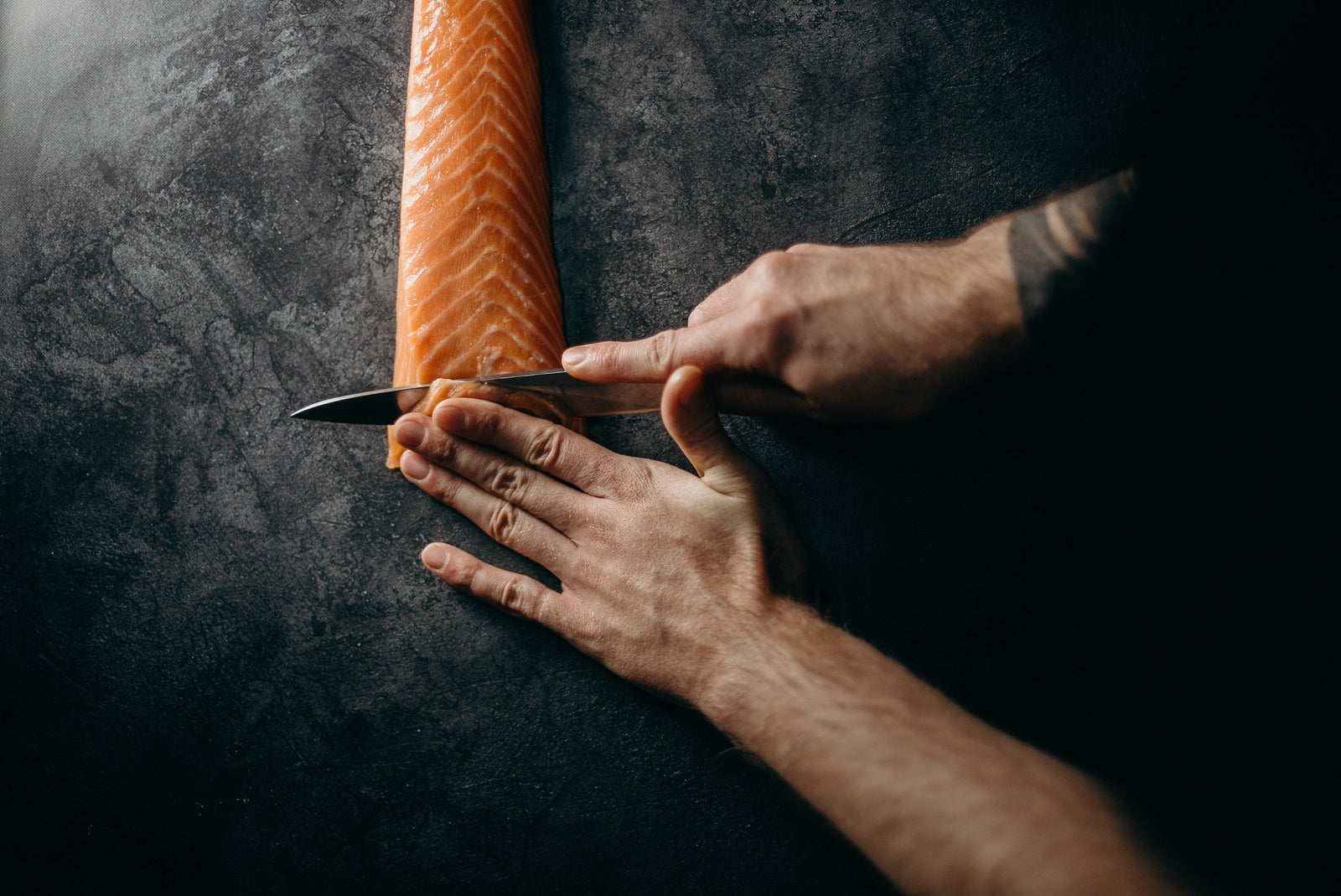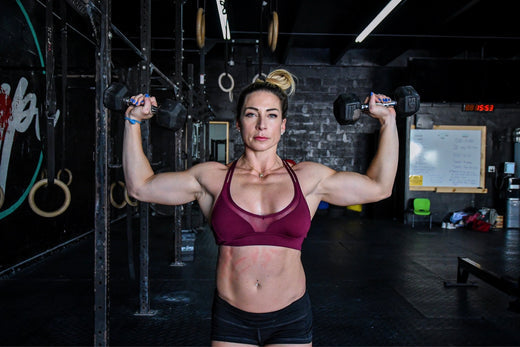Americans consume nearly 185 million pounds of salmon each year. With fish farms booming in coastal regions like Maine and Washington, domestic aquaculture now produces over 10 million pounds annually. But alongside salmon at your local seafood counter, you may have noticed another fillet that looks nearly identical—steelhead trout.
So, what’s the real difference between salmon and steelhead? Are they interchangeable in nutrition, taste, and cooking? And which one is better for your table—and your health?
Let’s break it down.
What Is Steelhead Trout?
Steelhead trout is an anadromous rainbow trout, meaning it migrates from freshwater to the ocean and back during its life cycle. Unlike typical rainbow trout that stay in rivers, steelhead spend part of their life in saltwater, making them larger and more nutritionally dense.
-
Grows to about 20–25 inches
-
Recognizable by a bright pink lateral stripe
-
Spawns multiple times throughout its lifespan
What Is Salmon?
Salmon is also an anadromous species that swims from freshwater rivers to the sea and back to its birthplace to spawn. However, most male salmon die after their first spawn—only a small percentage survive and return.
There are several types of salmon:
-
Chinook (King)
-
Coho
-
Sockeye
-
Chum
-
Pink
-
Atlantic
Wild salmon is found along the coasts of California, Alaska, and the Pacific Northwest, while Atlantic salmon is now largely farmed, especially off the coast of Maine.
Wild-Caught vs. Farm-Raised Fish
The environment in which a fish is raised—wild vs. farmed—can impact its nutritional value, taste, and contaminant levels.
| Type | Wild-Caught | Farm-Raised |
|---|---|---|
| Diet | Marine organisms | Commercial feed (often enriched with omega-3s) |
| Fat Content | Leaner, variable omega-3s | Higher in fat, more consistent omega-3s |
| Contaminants | Lower (if domestic) | Potential for higher levels, especially in imported fish |
| Antibiotics | None (naturally) | Possible, depending on regulations |
| Regulation | Strict in the U.S. | Varies internationally; U.S. standards are among the strictest |
“U.S. farm-raised fish are highly regulated, but imported seafood may contain more antibiotics and contaminants.” — FDA
Nutritional Comparison: Salmon vs. Steelhead
| Nutrient (3 oz. serving) | Steelhead Trout | Atlantic Salmon (Farmed) |
|---|---|---|
| Calories | 120 | 175 |
| Fat | 5g | 11g |
| Protein | 17g | 19g |
| Omega-3s (EPA & DHA) | Higher | High |
| Vitamin D | 645 IU | 570 IU |
| Vitamin B12 | 3.5 mcg | 2.4 mcg |
| Sodium & Cholesterol | Lower | Higher |
Steelhead trout offers a leaner, nutrient-rich profile with fewer calories and slightly higher levels of essential vitamins and omega-3s.
Taste and Texture
Steelhead and salmon are often confused for each other in both appearance and flavor:
-
Texture: Both are tender, flaky, and moist
-
Flavor:
-
Steelhead is milder, slightly sweet, and less “fishy”
-
Salmon is richer, oilier, and more savory
-
Taste may vary depending on:
-
Wild vs. farm-raised sourcing
-
Fresh vs. frozen handling
-
Cooking method
Price
On average, steelhead trout costs about $0.25 less per pound than salmon, making it a budget-friendly alternative without sacrificing taste or nutrition.
Sustainability and Sourcing
Choosing sustainable seafood helps protect aquatic ecosystems and supports responsible fisheries.
-
Steelhead trout, when farmed in the U.S., is considered a “Best Choice” by sustainability organizations.
-
Wild Alaskan salmon is among the most sustainable seafood available globally.
-
Avoid imported farmed fish when possible, as regulations on antibiotics and water quality may be less stringent.
“The Monterey Bay Aquarium’s Seafood Watch recommends U.S. farmed steelhead and wild Alaskan salmon as sustainable options.” — Seafood Watch
Look for certifications:
-
Marine Stewardship Council (MSC)
-
Aquaculture Stewardship Council (ASC)
-
Best Aquaculture Practices (BAP)
Mercury and Contaminant Levels
Both steelhead and salmon are low in mercury, making them safe to consume 2–3 times per week, even for children and pregnant women.
“The FDA lists salmon and steelhead trout as among the safest seafood choices with the lowest mercury content.” — FDA
To reduce potential contaminant exposure:
-
Choose wild-caught or U.S.-farmed fish
-
Avoid frequent consumption of imported farm-raised products
Quick Cooking Tips
Steelhead and salmon are both versatile, forgiving, and flavorful when cooked properly. Here are a few methods:
-
Grilling: Marinate with lemon and herbs; cook skin side down first.
-
Pan-Searing: Use high heat and a dry surface for crispy skin.
-
Baking: 375°F for 12–15 minutes with olive oil, garlic, and dill.
-
Smoking: Ideal for steelhead—enhances its mild, sweet flavor.
Tip: Pat the fillet dry before cooking for better searing and texture.
Frequently Asked Questions
Q: Is steelhead trout a type of salmon?
No. Steelhead is a type of rainbow trout, but due to its ocean life cycle, it shares many characteristics with salmon.
Q: Can you substitute steelhead for salmon in recipes?
Yes. The taste and texture are so similar that most recipes can be used interchangeably.
Q: Which is healthier: salmon or steelhead?
Steelhead is leaner with fewer calories and fat per serving, while still offering comparable protein and omega-3s.
Q: Is either fish high in mercury?
No. Both salmon and steelhead are low-mercury and safe for regular consumption.
Q: Which tastes less “fishy”?
Steelhead is often described as milder and slightly sweeter than salmon.
Final Takeaway: Salmon or Steelhead—Which Should You Choose?
When it comes to nutrition, affordability, and versatility, both salmon and steelhead trout are exceptional choices. However, steelhead offers a leaner, more nutrient-dense profile with a slightly milder taste—making it a great alternative, especially if you're looking for something new or more budget-friendly.
Whether you’re grilling, baking, or smoking—either fish supports heart health, muscle recovery, and whole-food nutrition.
“Steelhead is an underrated nutritional powerhouse, delivering lean protein, omega-3s, and a flavor profile nearly identical to salmon—at a better price.”
Need Help With Optimizing Your Diet And Nutrition Plan To Finally Get The Results You've Been Waiting For?
SWOLVERINE IS AN ENDURANCE ATHLETE AND ACTIVE LIFESTYLE BRAND. MADE FOR THE ELITE ATHLETE, AND THE STRONG-WILLED OUR PRODUCTS WERE DESIGNED TO FUEL YOUR ATHLETIC PERFORMANCE. WE PERFORM WHEN YOU PERFORM.
We believe that everyone can optimize not only their athletic performance but their human potential. The way we believe we can optimize performance is through transparency, clinically effective doses, and clinically proven ingredients with evidence-based outcomes. We provide the nutrients you need to power your active lifestyle.
Find similar articles:
Nutrition







